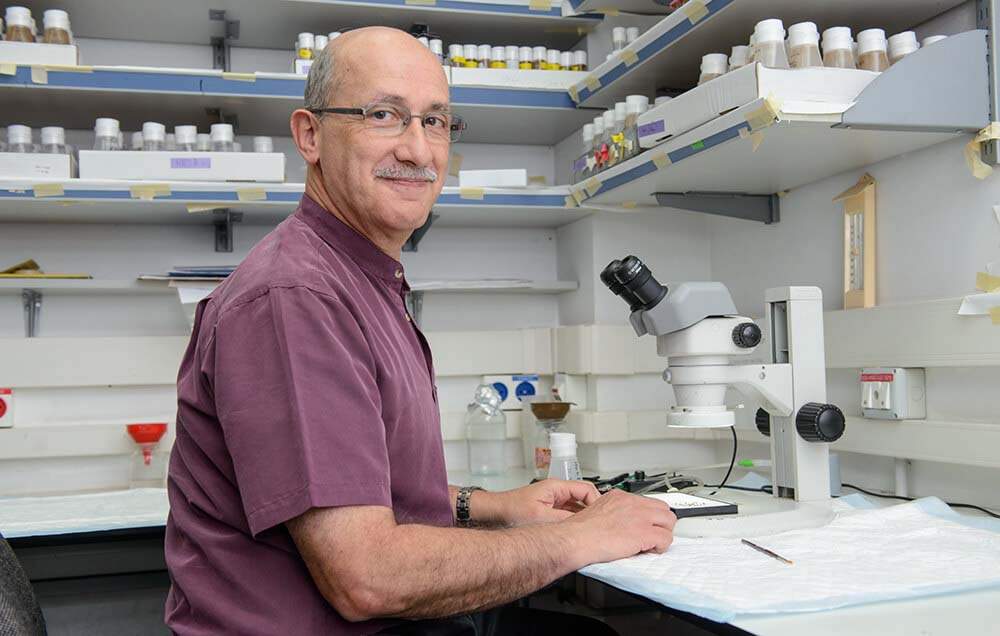Are you a journalist? Please sign up here for our press releases
Subscribe to our monthly newsletter:

The long, thin fibers that make up our muscles have a unique way of forming: over the course of their development, many cells called myoblasts fuse together, one after the other, producing a single, large cell with numerous nuclei. How, exactly, does one cell fuse into another? Dr. Eyal Schejter, a staff scientist in Prof. Ben-Zion Shilo’s group in the Weizmann Institute of Science’s Molecular Genetics Department, led a research project to uncover the process of myoblast fusion and image it in more detail than ever before. The group’s findings, which reveal what occurs stage after stage – from the time that adhesion proteins on the cells’ outer walls create contact, until pores in the membranes widen and merge – were recently published (and highlighted with a cover image) in The Journal of Cell Biology.
Schejter and Shilo, together with Nagaraju Dhanyasi, a joint student in Shilo’s lab and the lab of Prof. K. VijayRaghavan lab at the National Center for Biological Sciences, Bangalore, India, used the fruit fly Drosophila for their research. Their innovation, says Schejter, was to track the formation of the strong flight muscles as the larva underwent metamorphosis into an adult fly. The developmental process of these muscles, the largest in the fly, is very similar to that of human skeletal muscles, but until now it has been difficult to follow in the lab. Thus much of the fruit fly research on muscles has focused instead on the muscle development in the embryo that gives rise to the larval musculature.
Schejter has years of experience working with Drosophila, as well as with a wide variety of microscopy methods. After completing his doctoral research in Shilo’s group at the Weizmann Institute, he conducted postdoctoral studies in Prof. Eric F. Wieschaus’s group at Princeton University, shortly before Prof. Wieschaus was awarded a Nobel Prize for his work on the molecular basis of development in Drosophila. Schejter has been working with Shilo since 2002.
The story these images tell reveals a new role for the adhesion proteins on the cell’s outer membrane
To observe the myoblast cell structure at the molecular level, the researchers turned to various electron microscopy methods. These freeze the cell in time, so the group “photographed” the developing muscle cells many times, at every stage and from every angle. They also developed new methods of preserving the samples so as to reveal the fine details of the cell membrane activities, and they employed a number of different methods for three-dimensional viewing of the flight muscle tissue. These studies were carried out in close collaboration with the staff of the Weizmann Institute’s Electron Microscopy Unit.
The story these images tell reveals a new role for the adhesion proteins on the cell’s outer membrane. These adhesion proteins generally help the cell stick to its surroundings or associate with other cells, often facilitating the cell’s communication with its environment. In the case of the myoblast, these proteins are employed to pull the cell into close physical contact with the edge of the growing muscle fiber, which is called the myotube. Indeed, when the group knocked out the genes for cell adhesion, myotube formation was defective, providing evidence that the adhesion stage is crucial for proper fusion. The electron microscopy analysis further revealed that following adhesion, the cells flatten against the myotube membrane. Multiple contact points then form between the two membranes, generating small pores that begin to widen, until the cell is finally fused into the myotube. These later stages of the fusion process were shown to rely on the actin-based cytoskeleton.
This work, says Schejter, has gained a lot of attention, as it has provided a new, detailed picture of muscle cell development – one that will ultimately help us better understand the process of skeletal muscle formation during human embryonic development and the molecular mechanisms underlying the repair of injured muscle fibers.